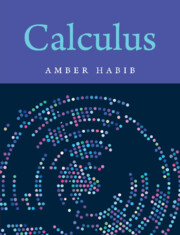Book contents
Summary
Integration can be seen as accumulation, the summing up of local changes to get a global result. In the previous chapter, we set up the general process for achieving this. We also saw how a specific kind of information—monotonicity—could be used to obtain global results. With its help we were able to formally define the natural logarithm and exponential functions, which are usually taken for granted in school mathematics.
Further progress requires a closer look at the local behavior of functions. The more we know of the local behavior, the better our chances of extracting global information. These considerations underlie our development of the notions of limit and continuity in this chapter. As applications, we will rigorously develop angles and their radian measures, followed by the trigonometric functions and their properties.
Limits
You have seen in school, the notation lim x!p f (x)= L, which is read as “the limit of f (x) at p is L” and is interpreted as “the values of f (x) approach L as the values of x approach p.” We need a clear definition of what we mean by “approaches.”
Example 3.1.1
Consider f (x) = 2x + 5. What happens if we take values of x that approach 0? Here are some calculations:
We see that as x gets closer to 0, f (x) appears to be getting closer to 5. Can we control this? Can we get the output f (x) close to 5 within any required accuracy level, simply by making the input x appropriately close to 0?
- Type
- Chapter
- Information
- Calculus , pp. 79 - 128Publisher: Cambridge University PressPrint publication year: 2023

